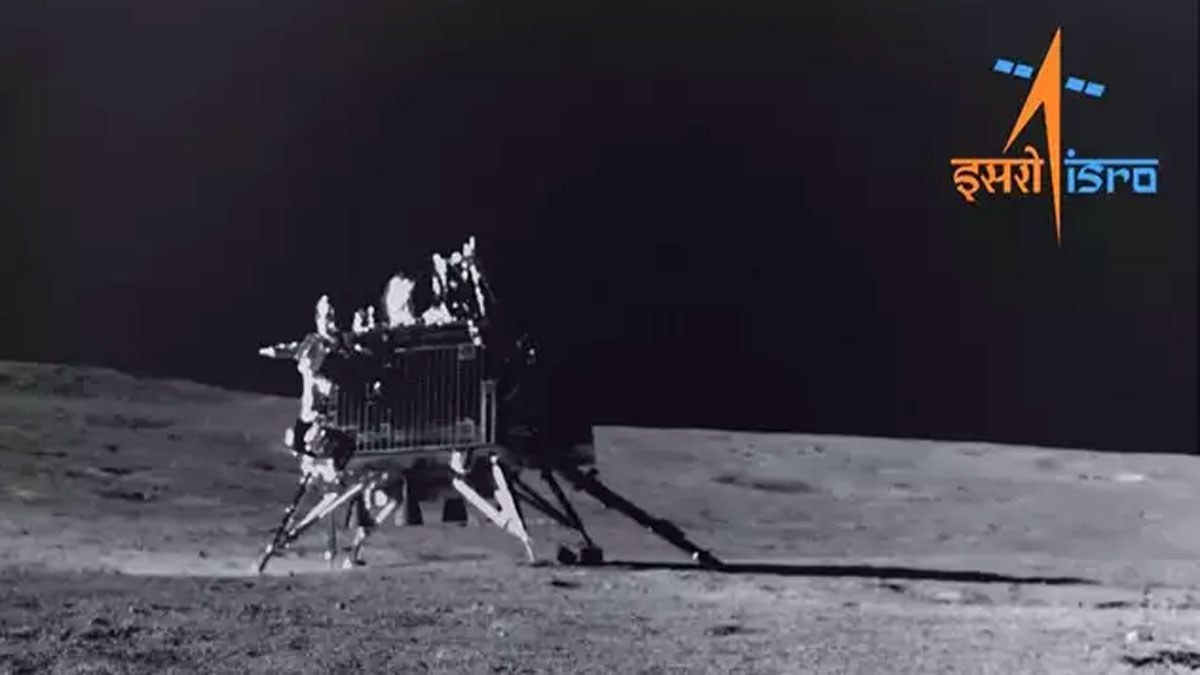Indian Space Research Organisation (ISRO) on Friday stated that the efforts are being continuously made to establish the contact with the Vikram lander and Pragyan rover to ascertain their wake-up condition but till now no signals are being received from it.
The Chandrayaan-3’s Vikram lander and Pragyan rover, located in the moon’s south polar region, are currently in a state of dormancy. Their condition is being assessed after being placed in sleep mode on September 2, following the onset of the lunar night.
It’s worth noting that a single lunar day lasts for 14 Earth days.
Taking the matter to X (formerly known as Twitter), ISRO wrote, “Chandrayaan-3 Mission: Efforts have been made to establish communication with the Vikram lander and Pragyan rover to ascertain their wake-up condition.”
Chandrayaan-3 Mission:
Efforts have been made to establish communication with the Vikram lander and Pragyan rover to ascertain their wake-up condition.As of now, no signals have been received from them.
Efforts to establish contact will continue.
— ISRO (@isro) September 22, 2023
“As of now, no signals have been received from them. Efforts to establish contact will continue,” ISRO further stated.
Earlier, ISRO stated that today the sunlight will fall at the Shiv Shakti point following which it will heat up the modules and after a certain surge in temperature the space organisation will try to re-establish the contact with Chandrayaan-3.
“Sunrise is expected to have occurred at the Shiv Shakti point today and soon Vikram and Pragyan will be receiving usable amounts of sunlight! #ISRO will now wait for them to heat up above a certain temperature before beginning attempts to re-establish communications with them on 22 Sept. #Chandrayaan3,” ISRO said in a post on X.
What If Chandrayaan 3’s Lander And Rover Successfully Activate?
If the Chandrayaan 3’s lander and rover successfully activate, it would mark a significant achievement for India’s space exploration efforts. This activation would allow for the collection of valuable data from the lunar surface, particularly in the region near the South Pole. The extended operation of these components could provide insights into the moon’s surface conditions and various scientific observations.
What Will Happen If Rover Fails To Revive
However, there are significant challenges to overcome. The extreme lunar temperatures, especially near the South Pole, can plummet to as low as -200 degrees Celsius. At such frigid temperatures, many materials, including plastics, carbon power materials, and electronics, can become brittle and fail. To address these challenges, ISRO would have implemented thermal management strategies to protect the lander and rover components.
In the event that the rover fails to revive but the lander functions, it would still be considered a remarkable feat given the challenging lunar conditions. Originally designed for only 14 days of operation, any extended functionality would be a testament to ISRO’s engineering and thermal management capabilities. The successful activation of either or both components would contribute valuable data to our understanding of the moon’s environment.













